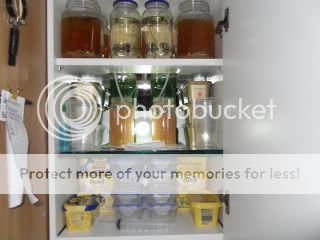Hi Luke,
The image below shows my live food cupboard in its present state. (500mm wall cupboard local hardware's store's finest) Home to gazillions of minute and microscopic critters. It is constantly evolving and spewing over into other cupboards and heated aquaria.
Basically it all circles around the light bulb, this is utilised for heating and illumination purposes.
In that set up I have lab cultured Paramoecium, Fruitfly, Vinegar eel, Grindalworm, Bananaworm, Microworm, the ability to hatch Brine-shrimp and Green Water (micro algae)production to feed my Daphnia and Monia cultures.
The only other thing that is added are airlines.
I specifically use rainwater all the time and mix it with Reverse Osmosis to the required specs. I now have this down to a fine art. The only thing I may do on occasion is to add a chemical buffer to reduce the pH. For most of my softwater species I have a TDS of around 19 (just over 1 dKH) and a pH of around 5.8, Temps are species dependant.
Good to see you are still keeping up with the latest nomenclature, I still term most of the South American annuals as Cynolebias. Good job most of the folks in my circles still recognise the old genus name. LOL
Regards
C

